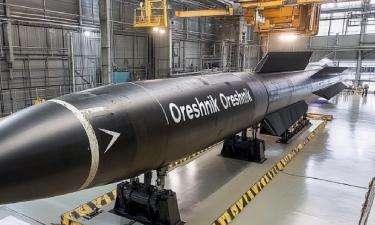Toyota develops and prospers thanks to magic of number 'eight'
August 28th marked the anniversary of one of the largest automakers in the world - the Japanese company Toyota. Seventy-six years ago, Kiichiro Toyoda of Japan founded an automotive shop that produced the first passenger car of AA model. As long as Toyoda studied automotive industry in Europe and the U.S., the predecessor of Toyota resembled Dodge and Chevrolet.
The founding father of the Japanese automaker, whose factories now operate in Africa, Asia, the Middle East and Europe, began his career at a plant that made weaving machines. The modern Toyota logo depicts a stylized weaving loop, which was designed to remind everyone of the roots of the widely popular Japanese cars. Toyoda Automatic Loom Works, led by Kiichiro, opened a new office in 1933, when many of its cars had already earned popularity in Europe and America.
The new branch of production was opened to fill the automotive gap in the Land of the Rising Sun too. Kiichiro Toyoda was not the first person who tried to establish the production of passenger cars in Japan. In 1917, Mitsubishi concern tried to bring the idea to life as well, but the attempts were unsuccessful. The first Japanese cars were terrible in comparison with those imported in Japan from Europe. Accordingly, the demand for home-made car left much to be desired. In this regard, the production of Mitsubishi passenger cars was shelved in 1921.
The lull did not last long. Mitsubishi decided to try its luck in the automotive industry for the second time in 1933. However, Kiichiro Toyoda had already returned from abroad by that time. He was armed with the knowledge of how to make passenger car appealing to the Japanese and how to establish mass production of cars in the country. Kiichiro was making gasoline engine cars to the delight of Japanese authorities that could only encourage the activist of Toyoda Automatic Loom Works.
A1 was the first passenger car that the factory produced. It was a day in May 1935. Toyoda's second product saw the light in August - it was G1 truck. A year later, Japan started the production of AA passenger cars models, apparently copying Western and European analogues. The moment when that vehicle left the production line is considered the birth of Toyota as a company.
Shortly before World War II, Toyota finally gained independence and its own name. Kiichiro proved to be quite a superstitious man. He preferred not to give his own name to the company because writing the name required nine hand movements, and 'nine' is an unlucky number in Japan. The attitude to number 'eight' in this mysterious country is completely different. 'Eight' is a symbol of wealth and prosperity in Japan. Writing an altered name - Toyota - required eight hand movements. The rest is history.
The company experienced great hardships during the war years. Japan's auto industry was developing very slowly during the war. Only the simplest models of cargo vehicles would be produced due to the acute shortage of materials. For that reason, Japanese soldiers had to use trucks with only one headlight. The company was seriously shattered when allies exploded Toyota factories in Aichi. There is a theory that says that Japan lost the war so quickly because of the explosions of the automotive factories. This assumption is certainly questionable, but still it points out the importance of Toyota factories for the Japanese.
The company survived the war together with the people of the Land of the Rising Sun and began to develop and prosper afterwards. In 1947, Toyota assembly lines started to produce SA business models. Three years later, Toyota Motor Sales Co. appeared, although it finished its existence in 1982. Afterwards, the company obtained its own distribution network, and by the 1960s, Toyota vehicles became available in other countries, including the U.S. and Brazil. The period marked the rapid expansion of the company: Toyota factories began to appear outside Japan. The first Toyota vehicle that was produced abroad saw the light in 1963: it was made in the Australian city of Melbourne.
The Japanese carmaker celebrated the beginning of the new millennium triumphantly. In 2007-2009, Toyota was recognized the largest automaker in the world, having left even General Motors behind. In May 2012, Toyota regained the first place in terms of international car sales. The incredible success of the company, which has been the leader on the market of automotive production for 76 years domestically and internationally, makes one think: maybe the Japanese are right, and number 'eight' really has the magic of prosperity?
Maria Snytkova.
Subscribe to Pravda.Ru Telegram channel, Facebook, RSS!



